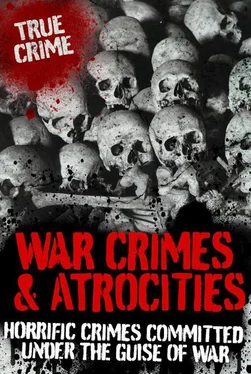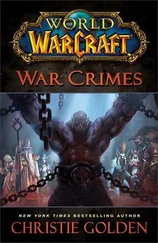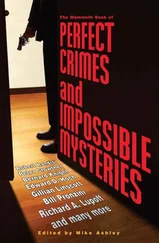As if this wasn’t bad enough, after the German invasion, the Ukraines were to suffer even more. Stalin put into action his ‘scorched earth’ policy, which called for the wholesale evacuation of industries, factories, machinery, skilled workers and livestock. From the capital city of Kiev, alone, some 197 major industrial plants were evacuated east to Russia in a period of two months. Anything that could not be physically moved was destroyed and burnt.
Two years later, when Hitler’s army started its retreat from the Ukraine, orders were given to loot and take back to Germany any works of art, rare books, engravings, libraries, sculptures and museum collections, adding up to hundreds of thousands valuable items.
The Ukraine was stripped of all its cultural wealth, and 151 museums, 62 theatres, 19,200 libraries and 600 cinemas were destroyed by the retreating Germans. In addition, approximately 28,000 villages and 714 towns were razed to the ground leaving over ten million people without any form of shelter. Whatever the Soviets failed to destroy in their retreat was destroyed by the Germans when they finally left the Ukraine.
By the end of the war, the Ukraine lay in ruins. The population had been decreased by 25 per cent. It is believed that as many as 6.8 million died of hunger or disease, while the remainder either evacuated or were deported as political prisoners and ended up as slave workers in Hitler’s Germany.
UNTOLD MASSACRES IN UKRAINE
The treatment of the Ukraine civilian population during World War II was ruthless, something that the rest of the world was never really aware of. On
23 September, 1942, SS execution squads aided by local pro-German Ukrainian police, burnt to the ground the village of Kortelisy, killing all of its 2,892 population of men, women and children. In fact, all over the Ukraine a total of 459 villages were completely destroyed, with all or a portion of their population executed by the German army. The Nazis set up around 160 concentration camps in the Ukraine to hold the tens of thousands of prisoners, while others were sent to Auschwitz and other so-called death camps in Poland.
ILJA ATROCITY
Ilja was a small town in western Russia, where a number of Jews were sent to work on a small farm. They managed to escape into the nearby forest and joined up with a group of partisans who had set up their headquarters there. The following day, two prominent Jews also fled into the forest to join the group of partisans, and the revenge was appalling. All the old or sick Jews living in Ilja were rounded up and shot in the streets or in their own homes. A further 900 were locked inside a building, which was then torched, causing all those inside to be burnt alive.
MASSACRE AT DUBNO
Another horrifying massacre of the Jewish people took place in the western Ukraine town of Dubno. The SS and Ukrainian troops had dug deep pits near the town’s airstrip, each one measuring approximately 30 m (98 ft) long and 3 m (10 ft) deep. Over the next few days the troops rounded up all the Jewish men, women and children, took them to the execution site and shot them to death. It is estimated that as many as 1,500 people were killed each day, until over 5,000 helpless civilians had been massacred. The bodies in the pits were piled up, row upon row, and then only crudely covered with earth.
The massacres were witnessed by an officer in the elite 9th Infantry Regiment, Capt Axel von dem Bussche, who was so nauseated by what he had seen that he offered to assassinate Hitler personally. In February 1944, dem Bussche agreed to blow up Hitler and himself while he demonstrated a new army winter uniform to the Führer. However, fate intervened that day when a British air raid destroyed the uniforms, forcing the assassination attempt to be cancelled.
MASSACRES IN VOLHYNIA
Volhynia was an area in north-west Ukraine, where a number of local Ukrainian nationalists formed themselves into a resistance army, the Ukrainian Uprising Army (UPA). Their primary aim was to fight the Nazi occupiers, but unfortunately their anger was diverted towards the local Polish minority, some 346,000 people. In an effort to drive all the Poles out of the Ukraine, with the aim of creating an independent Ukrainian state after the war, the UPA started their own programme of ethnic cleansing. They went from village to village, killing anyone of Polish nationality and leaving behind them a trail of death and destruction. These massacres continued for more than a year in all the rural areas, until either all the Polish residents had been killed or were forced to leave their homes.
The German occupation forces simply turned a blind eye to the atrocities and, although the exact figure has never really been assessed, it is believed to be as high 60,000. Today there are more than 600 mass graves in the Volhynia area, containing the bodies of the murdered Polish civilians.
KOVNO MASSACRE
Lithuanian mercenaries, with the help of the German police, put to death 136,421 Jews in 1941. Of these, 55,556 were women and 34,464 were children, all shot to death in a deep pit just outside Kovno.The Jews were marched in groups of about 200 to their place of execution, stripped of all their clothes despite the freezing conditions and told to stand on the edge of the pits to await their fate. One by one, they were gunned to death. To cover up what they had done, the mercenaries forced 72 men and women from the ghettos to dig up the bodies and set fire to them. The prisoners were all chained together to prevent them from running away, and at the end of their ordeal they were killed and their ghetto completely destroyed.
Kovno was not an isolated incident, and there are records of Jews being eradicated throughout Lithuania. Prior to the Germans invading, around 240,000 Jews lived in Lithuania, but it is estimated that only 6,000 or 7,000 survived the holocaust.
ATROCITY AT FEODOSIA
The port of Feodosia stands on the shores of the Black Sea, and in December 1941 it was occupied by German forces. To prepare for the attack on Sevastopol, the majority of the soldiers had left Feodosia, leaving behind a small detachment of troops and wounded soldiers, who were convalescing in the city’s hospitals. On 29 December, the city was bombarded by the Soviet Black Sea Fleet, which managed to land and take occupation of the port.
On 18 January, 1942, the Germans returned and retook Feodosia, only to find that the majority of the German personnel had been brutally murdered. Wounded German soldiers had literally been thrown out of hospital windows to make room for Russian casualties. Buckets of water had been thrown over the bodies and they were left to freeze to death. Many other badly mutilated bodies were found on the beach, having been thrown from a wall. Their bodies were floating in the surf covered by thin sheets of ice. There were only 12 survivors, who had hidden in cellars when the Russian troops arrived, and they managed to tell the tale of what had taken place.
CHILDREN DIE IN CHARTSYSK
Retreating Soviet soldiers passed a small ravine between the the Chartsysk and Snizhy stations about 60 km (37 miles) from the city of Stalino. Although they were used to the sight of death, what they saw that day made them sick to their stomachs. They found the the bodies of 370 slain children, aged between 14 and 16 years, in the ravine. They were all dressed in the black uniform of the FSU Trade and Craft School in Stalino. It was later discovered that the children were being evacuated from the school ahead of the advancing German troops. After walking the 60 km (37 miles), they had become exhausted and hungry and had begged for transport to take them the rest of the way. Their guardians told them to sit down and promised to send trucks. However, instead of the transport they expected, a detachment of Russian political police from the NKVD arrived, carrying machine guns. Far from helping the desperate children, they simply killed them in cold blood and threw their bodies into the ravine.
Читать дальше












